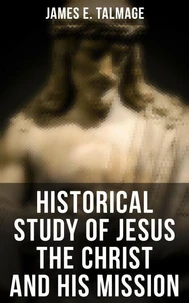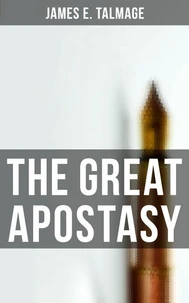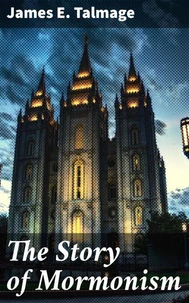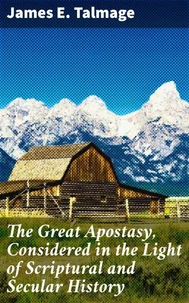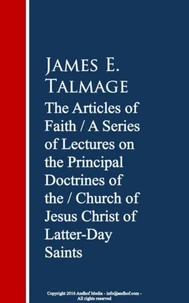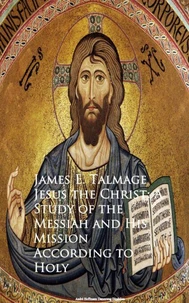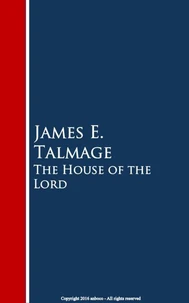The House of the Lord: A Study of Holy Sanctuaries Ancient and Modern
Par :Formats :
Disponible dans votre compte client Decitre ou Furet du Nord dès validation de votre commande. Le format ePub est :
- Compatible avec une lecture sur My Vivlio (smartphone, tablette, ordinateur)
- Compatible avec une lecture sur liseuses Vivlio
- Pour les liseuses autres que Vivlio, vous devez utiliser le logiciel Adobe Digital Edition. Non compatible avec la lecture sur les liseuses Kindle, Remarkable et Sony
 , qui est-ce ?
, qui est-ce ?Notre partenaire de plateforme de lecture numérique où vous retrouverez l'ensemble de vos ebooks gratuitement
Pour en savoir plus sur nos ebooks, consultez notre aide en ligne ici
- Nombre de pages232
- FormatePub
- ISBN859-65--4710353-0
- EAN8596547103530
- Date de parution20/07/2022
- Protection num.Digital Watermarking
- Taille3 Mo
- Infos supplémentairesepub
- ÉditeurDIGICAT
Résumé
In 'The House of the Lord: A Study of Holy Sanctuaries Ancient and Modern, ' James E. Talmage presents an incisive exploration of the significance of sacred temples throughout history, employing a scholarly approach that synthesizes theological insights with archaeological evidence. Talmage's literary style is characterized by clarity and erudition, deftly intertwining scriptural analysis with architectural descriptions to illuminate the multifaceted relationships between divinity, worship, and physical space.
This work situates itself within the broader context of early 20th-century religious scholarship, responding to an era increasingly focused on the intersections of faith and cultural heritage. James E. Talmage, an influential figure in Mormon theology and a member of the Quorum of the Twelve Apostles, draws on his extensive background in geology and philosophy to inform his theological inquiry. His dual expertise as both a scholar and a leader within the Latter-day Saint community provides a unique lens through which he examines how ancient practices inform modern worship, seeking to bridge the past and present in the ongoing dialogue about sacred spaces.
This book is highly recommended for scholars of religious studies, architects of sacred spaces, and anyone interested in the interplay between faith and architecture. Talmage's meticulous research and profound insights render this volume an essential resource for understanding the enduring nature of holy sanctuaries across cultures and time periods.
This work situates itself within the broader context of early 20th-century religious scholarship, responding to an era increasingly focused on the intersections of faith and cultural heritage. James E. Talmage, an influential figure in Mormon theology and a member of the Quorum of the Twelve Apostles, draws on his extensive background in geology and philosophy to inform his theological inquiry. His dual expertise as both a scholar and a leader within the Latter-day Saint community provides a unique lens through which he examines how ancient practices inform modern worship, seeking to bridge the past and present in the ongoing dialogue about sacred spaces.
This book is highly recommended for scholars of religious studies, architects of sacred spaces, and anyone interested in the interplay between faith and architecture. Talmage's meticulous research and profound insights render this volume an essential resource for understanding the enduring nature of holy sanctuaries across cultures and time periods.
In 'The House of the Lord: A Study of Holy Sanctuaries Ancient and Modern, ' James E. Talmage presents an incisive exploration of the significance of sacred temples throughout history, employing a scholarly approach that synthesizes theological insights with archaeological evidence. Talmage's literary style is characterized by clarity and erudition, deftly intertwining scriptural analysis with architectural descriptions to illuminate the multifaceted relationships between divinity, worship, and physical space.
This work situates itself within the broader context of early 20th-century religious scholarship, responding to an era increasingly focused on the intersections of faith and cultural heritage. James E. Talmage, an influential figure in Mormon theology and a member of the Quorum of the Twelve Apostles, draws on his extensive background in geology and philosophy to inform his theological inquiry. His dual expertise as both a scholar and a leader within the Latter-day Saint community provides a unique lens through which he examines how ancient practices inform modern worship, seeking to bridge the past and present in the ongoing dialogue about sacred spaces.
This book is highly recommended for scholars of religious studies, architects of sacred spaces, and anyone interested in the interplay between faith and architecture. Talmage's meticulous research and profound insights render this volume an essential resource for understanding the enduring nature of holy sanctuaries across cultures and time periods.
This work situates itself within the broader context of early 20th-century religious scholarship, responding to an era increasingly focused on the intersections of faith and cultural heritage. James E. Talmage, an influential figure in Mormon theology and a member of the Quorum of the Twelve Apostles, draws on his extensive background in geology and philosophy to inform his theological inquiry. His dual expertise as both a scholar and a leader within the Latter-day Saint community provides a unique lens through which he examines how ancient practices inform modern worship, seeking to bridge the past and present in the ongoing dialogue about sacred spaces.
This book is highly recommended for scholars of religious studies, architects of sacred spaces, and anyone interested in the interplay between faith and architecture. Talmage's meticulous research and profound insights render this volume an essential resource for understanding the enduring nature of holy sanctuaries across cultures and time periods.



